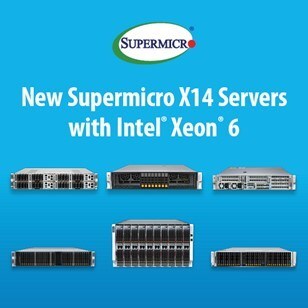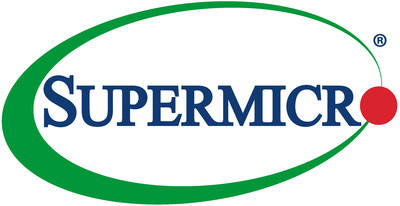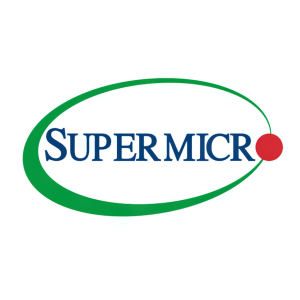Supermicro Unveils New X14 AI, Rackmount, Multi-Node, and Edge Server Families Based on Intel® Xeon® 6 Processors with E-cores and Soon, P-cores Systems With Liquid Cooling
Supermicro has unveiled its new X14 server portfolio at Computex 2024, featuring the latest Intel Xeon 6700-series processors with E-cores, and future support for Intel Xeon 6900-series processors with P-cores. These systems are designed for AI, Cloud, Storage, and 5G/Edge applications, offering enhanced performance, efficiency, and customization.
The X14 servers include rackmount, multi-node, and edge servers, with key models like SuperBlade, BigTwin, and GrandTwin incorporating the new processors. The launch promises up to 2-3x better AI workload performance and 2.8x higher memory bandwidth compared to previous generations.
The new systems also feature liquid cooling solutions to increase efficiency and reduce TCO. Additionally, the portfolio supports the OCP Data Center Modular Hardware System (DC-MHS), enhancing manageability and maintenance. With a production capacity of 5,000 racks per month, Supermicro aims to deliver these high-performance, energy-efficient systems globally.
- Launch of X14 server portfolio featuring latest Intel Xeon 6700-series processors.
- Future support for Intel Xeon 6900-series processors with P-cores.
- Up to 2-3x better performance for AI workloads.
- 2.8x higher memory bandwidth.
- Enhanced efficiency with liquid cooling solutions.
- Support for OCP Data Center Modular Hardware System, simplifying maintenance.
- Global production capacity of 5,000 racks per month.
- Future support for Intel Xeon 6900-series processors not yet available.
- Performance claims are based on architectural projections, not real-world tests.
Insights
Supermicro's introduction of the new X14 server portfolio integrated with Intel® Xeon® 6 processors marks a significant step in server technology, particularly for AI and high-performance computing (HPC) environments. These advanced systems promise noteworthy improvements in performance and energy efficiency, key factors for modern data centers. The integration of E-cores and P-cores offers a flexible approach, providing tailored solutions for various computational workloads, from cloud-native applications to complex AI tasks.
The emphasis on liquid cooling is particularly intriguing. Liquid cooling can potentially reduce Power Usage Effectiveness (PUE), enhancing overall system efficiency and lowering operational costs. This could be especially beneficial in data centers aiming to meet environmental sustainability goals.
From a technology standpoint, the support for DDR5-6400 and up to 400G networking are pivotal upgrades. These features enable faster data processing and higher throughput, important for demanding workloads. Moreover, the introduction of CXL 2.0 support signifies advancements in data-centric computing, fostering improved resource sharing and flexibility within data centers.
For investors, Supermicro’s launch of the X14 servers could represent a potential growth catalyst. The enhanced performance and efficiency of these systems align well with market trends towards AI and cloud computing. The adoption of Intel Xeon 6 processors indicates Supermicro's commitment to utilizing cutting-edge technology, which may bolster its market position against competitors.
Revenue growth could be anticipated from sectors like cloud service providers and enterprise data centers, given the increased performance and efficiency. Additionally, the unique focus on liquid cooling solutions could appeal to environmentally conscious clients, potentially expanding Supermicro's client base and opening new revenue streams.
However, investors should also consider the initial cost implications of adopting these advanced technologies. Investments in liquid cooling infrastructure, while beneficial long-term, require significant upfront capital. Monitoring Supermicro’s financial health and assessing how they manage these costs will be critical for understanding long-term profitability.
The introduction of Supermicro’s X14 servers, combined with the latest Intel Xeon processors, reflects a strategic response to market demands for increased computational power and efficiency. The market for AI, cloud computing and data analytics is rapidly expanding and these new systems cater to this growth by offering enhanced performance metrics such as higher core counts and improved memory bandwidth.
Supermicro's focus on low total cost of ownership (TCO) through energy-efficient solutions is likely to resonate well with businesses aiming to optimize operational costs. The trend towards liquid cooling further underscores a market shift towards sustainable and cost-effective data center operations.
However, the competitive landscape in the server market is intense, with other major players also innovating rapidly. Supermicro must not only demonstrate the technical superiority of its X14 lineup but also effectively market these advantages to capture and retain market share.
Supermicro's Expanded, Proven Portfolio Includes Systems Designed for Maximum Performance-Per-Watt on Cloud-Native, Storage Optimized, and Scale-Out Workloads, and Air and Liquid- Cooled Systems for AI and HPC Environments
"Supermicro is an industry leader in designing, building, and delivering workload-optimized solutions at scale, including data center scale liquid cooling. The new X14 servers will provide even greater flexibility and customization options to our customers," said Charles Liang, president and CEO of Supermicro. "The Supermicro X14 product families are our most powerful and flexible systems we have ever designed and are optimized for a wide range of applications, from the data center to the edge. We see that up to
For greater efficiency and lower TCO, Supermicro offers liquid cooling solutions that can be added to any deployment, including CPU and GPU cold plates, a cooling distribution unit, manifold, tubing, and a cooling tower, with all components developed and manufactured in-house for a complete solution.
The new Intel Xeon 6 processors with E-cores feature a single thread per core. They are optimized for workloads that benefit from a more significant number of energy-efficient cores to run more simultaneous instances at once using less power, such as cloud-native CDNs, network microservices, cloud-native applications such as Kubernetes, application DevOps, unstructured databases, and scale-out analytics.
Supermicro X14 systems powered by the new Intel Xeon 6 processors feature pin compatibility between E-core and P-core variants. Current and future Supermicro systems will feature up to 576 cores per node, DDR5-6400 and MCR DIMMs with up to 8800 MT/s, CXL 2.0, wider E1.S and E3.S support, and up to 400G networking. The new Intel Xeon 6 processors will be available in the 6700-series, an upgraded version of previous generation Intel Xeon processors, and the 6900-series, an all-new class of processors to maximize performance. Intel Xeon 6900-series processors will feature more cores, higher TDP, increased memory channels, and support for MCR DIMMs. The Supermicro X14 platform is also the first Supermicro platform to support the OCP Data Center Modular Hardware System (DC-MHS), which reduces complexity and simplifies maintenance for large cloud service providers and hyperscalers.
"Intel is executing on its roadmap to deliver '4 nodes in 5 years', and with Xeon 6, we are introducing revolutionary new processor features including our first ever enterprise-class Efficient-core products for cloud-native and scale-out workloads ," said Ryan Tabrah, VP and GM of Xeon 6 E-Core Products at Intel. "These new processors are enabling our partners such as Supermicro to develop new Xeon systems which are denser and more efficient than ever before, helping customers to achieve their business goals while lowering TCO."
The Supermicro portfolio of X14 systems is performance-optimized and energy-efficient, incorporates improved manageability and security, supports open industry standards, and is rack-scale optimized. With a global production capacity of 5,000 racks per month, including 1,350 liquid-cooled racks, Supermicro's expert engineers can design, build, validate, and deliver complete systems with industry-leading time-to-market.
Launching today with Intel Xeon 6700-series processors with E-cores:
SuperBlade® – Supermicro's high-performance, density-optimized, and energy-efficient multi-node platform optimized for AI, Data Analytics, HPC, Cloud, and Enterprise workloads. With these new blade systems, one rack can feature up to 34,560 Xeon compute cores.
Hyper – Flagship performance rackmount servers designed for scale-out cloud workloads, with storage & I/O flexibility that provides a custom fit for a wide range of application needs.
CloudDC – All-in-one platform for cloud data centers, based on the OCP Data Center Modular Hardware System (DC-MHS) with flexible I/O and storage configurations and dual AIOM slots (PCIe 5.0; OCP 3.0 compliant) for maximum data throughput.
WIO – Offers flexible I/O configurations in a cost-effective architecture to deliver truly optimized systems for specific enterprise requirements.
BigTwin® – 2U 2-Node or 2U 4-Node platform providing superior density, performance, and serviceability with dual processors per node and hot-swappable tool-less design. These systems are ideal for cloud, storage, and media workloads with new models, including E3.S drive support for superior density and throughput.
GrandTwin® – Purpose-built for single-processor performance and memory density, featuring front (cold aisle) hot-swappable nodes and front or rear I/O for easier serviceability. Now available with E1.S drives for better storage density and throughput.
Hyper-E – Delivers the power and flexibility of our flagship Hyper family optimized for deployment in edge environments. Edge-friendly features include a short-depth chassis and front I/O, making Hyper-E suitable for edge data centers and telco cabinets. These short-depth systems support up to 3 high-performance GPU or FPGA cards.
Edge/Telco – High-density processing power in compact form factors optimized for telco cabinet and Edge data center installation. Optional DC power configurations and enhanced operating temperatures up to 55° C (131° F).
Petascale Storage – Industry-leading storage density and performance with EDSFF E1.S and E3.S drives, allowing unprecedented capacity and performance in a single 1U or 2U chassis.
Coming Soon with upcoming Intel Xeon 6 6900-series processors with P-cores:
GPU Servers with PCIe GPUs – Systems supporting advanced accelerators to deliver dramatic performance gains and cost savings. These systems are designed for HPC, AI training, rendering, and VDI workloads.
Universal GPU Servers – These are the most powerful servers for large-scale AI training and large language models. Open, modular, standards-based servers that provide superior performance and serviceability with GPU options, including the latest PCIe, OAM, and NVIDIA SXM technologies.
New Multi-node Servers - High-density 2U4N systems optimized for HPC, data center, financial services, manufacturing, and scientific research applications. Front-accessible service design allows cold-aisle serviceability with flexible I/O and drive configurations.
* Compared to 4th Gen Intel Xeon Scalable Processors. Based on architectural projections as of August 21, 2023, relative to the prior generation. Your results may vary.
About Super Micro Computer, Inc.
Supermicro (NASDAQ: SMCI) is a global leader in Application-Optimized Total IT Solutions. Founded and operating in
Supermicro, Server Building Block Solutions, and We Keep IT Green are trademarks and/or registered trademarks of Super Micro Computer, Inc.
All other brands, names, and trademarks are the property of their respective owners.
SMCI-F
![]() View original content to download multimedia:https://www.prnewswire.com/news-releases/supermicro-unveils-new-x14-ai-rackmount-multi-node-and-edge-server-families-based-on-intel-xeon-6-processors-with-e-cores-and-soon-p-cores-systems-with-liquid-cooling-302161041.html
View original content to download multimedia:https://www.prnewswire.com/news-releases/supermicro-unveils-new-x14-ai-rackmount-multi-node-and-edge-server-families-based-on-intel-xeon-6-processors-with-e-cores-and-soon-p-cores-systems-with-liquid-cooling-302161041.html
SOURCE Super Micro Computer, Inc.









